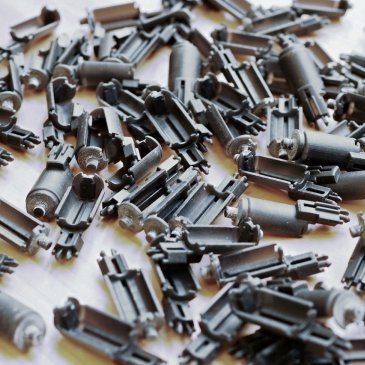ASSA ABLOY is a world leader in security solutions and innovative technologies for entrance systems. Their products are used in a wide range of applications, from industrial and commercial buildings to homes and private residences. They specialize in the manufacture of locks, door and window systems, security doors and access control systems, with an emphasis on a combination of safety, reliability and design. Thanks to its long history and constant innovation efforts, ASSA ABLOY has become a symbol of high quality and reliability in the world of security technology.
For ASSA ABLOY engineers, finding a more efficient process for developing their own opening solutions was a real challenge. Current processes, such as creating prototypes using injection molding in metal molds, were expensive and time-consuming.
The search for an alternative technology was difficult as it had to meet several key requirements, including the need for a durable, long-lasting material capable of withstanding 120,000 lock unlock cycles while providing a quality finish.
After an unsuccessful internal search, they turned to Cotu, an experienced SLA 3D printing service provider for the industrial sector.
How Cotu decided to solve this challenge
The technology used: Asiga MAX
The material used: LOCTITE 3D 3843 HDT60 High Toughness Matte Black
Cotu once again used its expertise in premium SLA materials and proposed the use of LOCTITE 3D 3843 HDT60 High Toughness Matte Black, which was the optimal choice to meet the client's requirements. High precision and thorough design were key to the detailed lock mechanism. Each part had to be precisely manufactured to fit perfectly on the axis of the little engine. Thanks to the Asiga MAX printer, the parts did not have to be glued, eliminating any looseness and ensuring a solid connection with a diameter of only 0.5 mm. The Asiga MAX printer was chosen for its precision and ability to produce parts with high precision and a quality finish.
Thanks to homogeneous lighting, consistent quality is ensured over time, and the integration of sensors makes it possible to achieve extremely accurate dimensions and repeatability of production. This is key to producing lock components with the required precision and quality. To achieve even higher resolution, nanopigment was used, which, in conjunction with Cotu's technical knowledge, ensured the precise execution of the demanding details of the project.
By using the LOCTITE 3843 material on the Asiga MAX 3D printer, it was possible to significantly reduce costs and shorten the time required for production. By eliminating the wait for injection mold manufacturing, 500 parts could be produced in just 15 minutes and delivered the same week. 3D printed prototypes were characterized by high accuracy and allowed for more tests to be carried out in the early stages of development, which significantly reduced the number of errors in the final products.
Case study on the Loctite website
Loctite Materials Provide 3D Printing Solutions for ASSA ABLOY
Do you want to bring your idea to life? Contact us for professional advice in SLA 3D printing. We will design the most suitable material, handle the complete production of your product, or deliver and help integrate the manufacturing process, including the technology.
Learn more about our 3D printing services, explore the consultancy offered, or schedule a meeting directly.
Gallery


